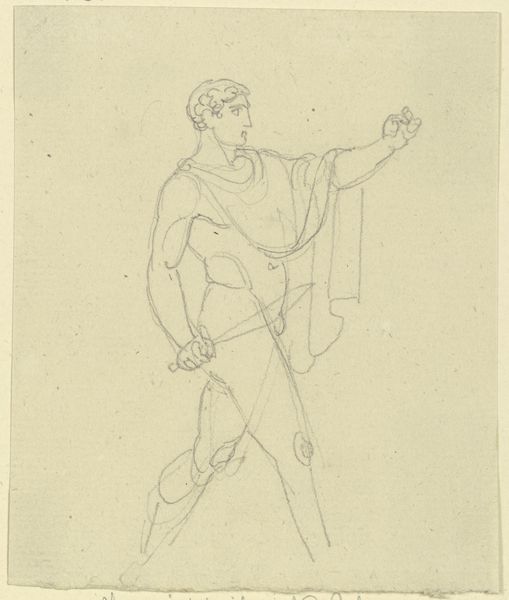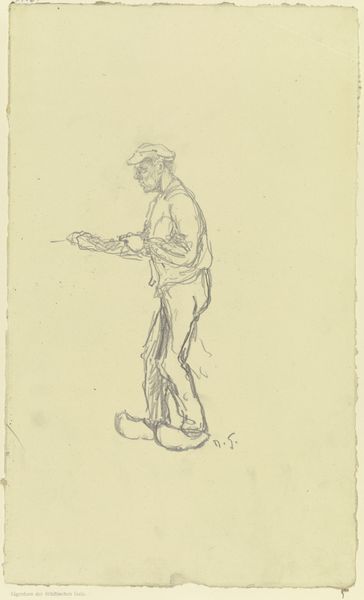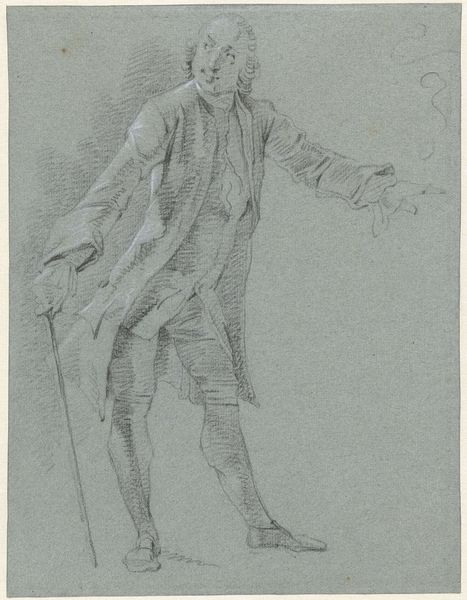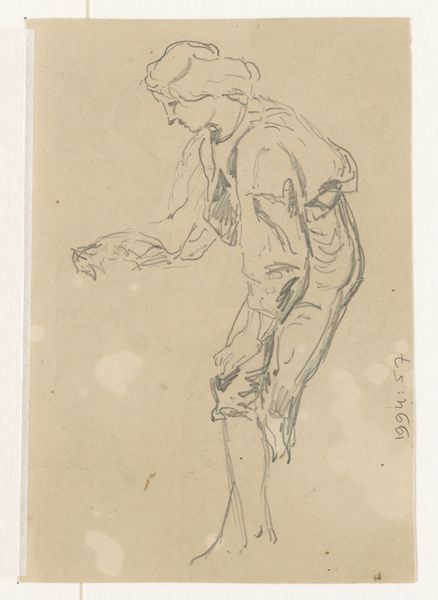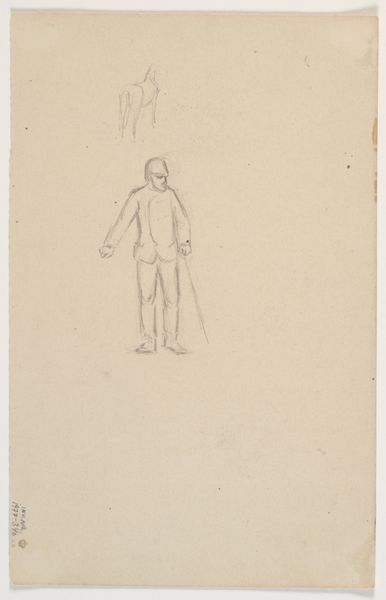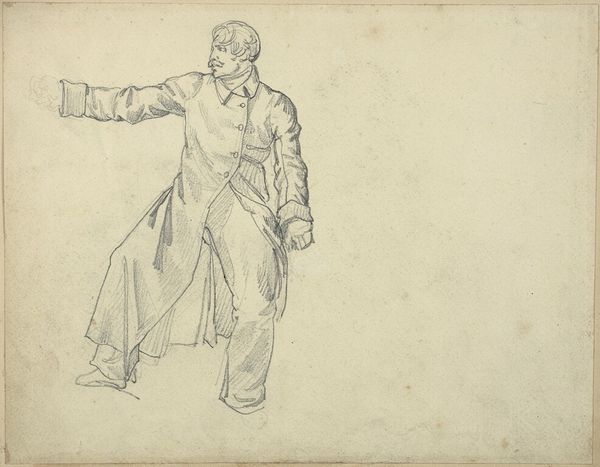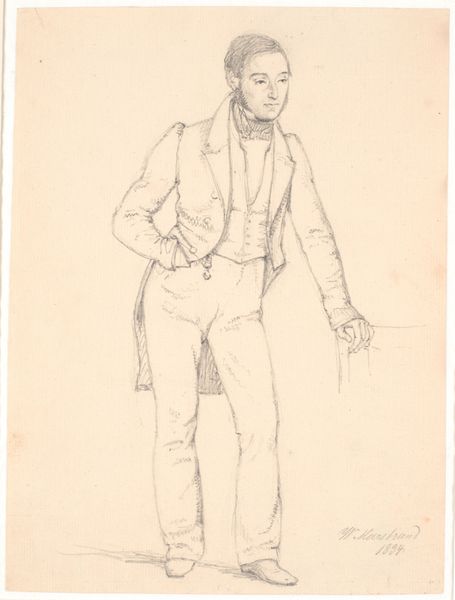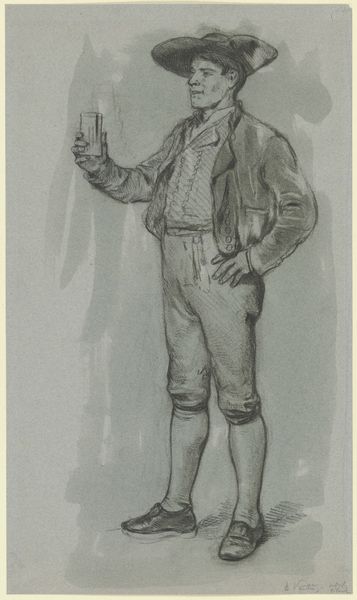
drawing, pencil
#
portrait
#
drawing
#
pencil
#
portrait drawing
#
pencil work
#
academic-art
#
realism
Copyright: Public Domain
Editor: Here we have Johann Jakob Hoff's "Hessischer Bauernbursche, ganze Figur tanzend," a pencil drawing whose date is, sadly, unknown. I’m struck by the figure’s energy – he seems to be caught mid-celebration. How do you read this work? Curator: This drawing, to me, speaks volumes about the social status and the performative nature of labor. Note the precision in rendering the clothing; the waistcoat, the jacket... how does that level of detail serve to elevate or perhaps even idealize this "Bauernbursche", this young peasant? Editor: That's interesting! I hadn't considered it in terms of idealization. I suppose I just saw a lively snapshot. Curator: Exactly, a snapshot that attempts to preserve an ideal of labor and life in a changing world. Consider the material – pencil. A relatively accessible medium, yet deployed with academic skill. Is Hoff documenting, or is he, through his craft, contributing to the romanticism of rural life, perhaps obscuring the realities of agrarian labor and class differences? What do you think about the clothing details versus the fact it is pencil, not oil? Editor: I guess the detailed rendering almost lends it a sense of dignity. And using a simple medium makes it feel a little more grounded somehow. Maybe Hoff’s intention was less about romanticizing and more about humanizing a worker through careful craft? Curator: Perhaps. Or, maybe both. These drawings offer us insight into the complex relationships between artist, subject, and the evolving societal perceptions of labor and leisure. Considering his hand and skill in this work changes its possible meanings. Editor: I definitely see a new layer to this now - it’s more complex than just a dancing figure. Thanks for helping me see that! Curator: My pleasure!
Comments
No comments
Be the first to comment and join the conversation on the ultimate creative platform.
